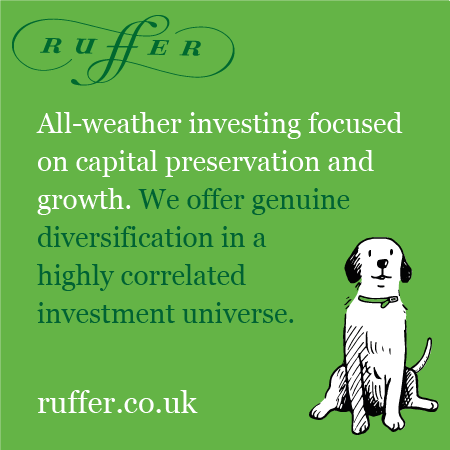Investing in big oil: Going 'beyond petroleum?

The energy sector has fallen from 16% of the S&P 500 just 13 years ago, to below 3% as of today, as our chart shows. If you looked back to the early 1980s you would have seen it was more than 20%.
If you add up all of the listed oil majors (BP, Royal Dutch Shell, ExxonMobil, Chevron etc) you get a market cap less than 40% of Apple’s $2.5 trillion (1). It looks decidedly like a one way track, reflecting an irreversible change to investor sentiment, indicative of a future no longer powered by fossil fuels.
And yet the integrated oil majors make up more than 6% of Ruffer portfolios. We often receive questions from clients about the rationale and justification for these investments.
Top down, the energy sector is attractive as a play on higher economic growth and as an inflation hedge. But there is a compelling story of industry evolution too.
This industry has been under pressure to limit capital expenditure into new oil production over the last five years. This has had the effect of tightening supply.
Chart source: Factset
However, global oil demand is growing and forecast to grow for at least another five years. The world consumes 100 million barrels of oil per day (2). As emerging market countries become wealthier, their demand for energy intensive things like cars, international travel and air conditioning is rising.
 Tight supply and rising demand are a recipe for rising prices. As the Greek shipping adage goes, “98 ships and 101 cargoes, boom. 98 cargoes and 101 ships, bust.”
Tight supply and rising demand are a recipe for rising prices. As the Greek shipping adage goes, “98 ships and 101 cargoes, boom. 98 cargoes and 101 ships, bust.”
However, asset managers don’t want to be seen to own these stocks as the inevitability of the green transition, and the awkward questions from clients, has left them uninvestable for many.
An example from 2000: BP Amoco was derided for their premature rebrand to ‘Beyond Petroleum’, but today it is starting to ring true. Across the industry, there is a metamorphosis happening in plain sight, but nobody wants to see it. That is the opportunity.
 In broad brush terms, at current prices, BP is an $92 billion company with an additional $38 billion of debt. At $75 per barrel of oil, BP produces at least $15 billion in free cash flow, which is being returned to shareholders via a 5% dividend yield, a further 6% buyback plus paying down debt. A 16% return is interesting—you get your money back in less than six years (3).
In broad brush terms, at current prices, BP is an $92 billion company with an additional $38 billion of debt. At $75 per barrel of oil, BP produces at least $15 billion in free cash flow, which is being returned to shareholders via a 5% dividend yield, a further 6% buyback plus paying down debt. A 16% return is interesting—you get your money back in less than six years (3).
But what if I told you this was after spending $4-5 billion a year on investing in renewables? If BP continue to invest at this rate, in five years, they will have invested a capital base of more than $20 billion of renewable energy assets. They may be one of the biggest renewables companies in the world—will the equity still be uninvestable?
 Returns on renewable projects are currently lower than oil and gas assets, but given their sustainability and their long lives, they are valued highly by the market. They are also utility-like in their predictability and the counterparty is, in effect, sovereign governments who underwrite the electricity price to de-risk the investments. By 2030, BP aims to generate 50 gigawatts (GW) of renewable power (4) In today’s market, that alone could be worth more than $100 billion.
Returns on renewable projects are currently lower than oil and gas assets, but given their sustainability and their long lives, they are valued highly by the market. They are also utility-like in their predictability and the counterparty is, in effect, sovereign governments who underwrite the electricity price to de-risk the investments. By 2030, BP aims to generate 50 gigawatts (GW) of renewable power (4) In today’s market, that alone could be worth more than $100 billion.
The reality is we live in a world that still needs oil and gas, even as we tackle climate change—just look at the extraordinary surge in gas prices in the news this week. There are supercharged gains to be made by engaging with companies and holding their hand on the journey from pariah to good citizen. The most money is made when things go from terrible to just about ok.
When Mr Market begins to appreciate oil majors are uniquely placed to be a deep-pocketed part of the solution, we expect a reappraisal of the value of the equity. The market values BP and peers like they won’t exist in the not-too-distant future. By 2025, we should have proof they will be with us long Beyond Petroleum.
2 International Energy Agency
3 Ruffer estimates, Bloomberg
4 bp.com
Past performance is not a guide to future performance. The value of investments and the income derived therefrom can decrease as well as increase and you may not get back the full amount originally invested. Ruffer performance is shown after deduction of all fees and management charges, and on the basis of income being reinvested. The value of overseas investments will be influenced by the rate of exchange.
The views expressed in this article are not intended as an offer or solicitation for the purchase or sale of any investment or financial instrument, including interests in any of Ruffer’s funds. The information contained in the article is fact based and does not constitute investment research, investment advice or a personal recommendation, and should not be used as the basis for any investment decision. References to specific securities are included for the purposes of illustration only and should not be construed as a recommendation to buy or sell these securities. This document does not take account of any potential investor’s investment objectives, particular needs or financial situation. This document reflects Ruffer’s opinions at the date of publication only, the opinions are subject to change without notice and Ruffer shall bear no responsibility for the opinions offered. Read the full disclaimer.


.png)





